How Did Discovering the Ecological Self Start?
Many are experiencing a disconnect with nature coupled with feelings of alarm and helplessness over ongoing environmental destruction. In his book, The Sand County Almanac, Aldo Leopold calls for a “Land Ethic,” in which “the relationships between people and land are intertwined: care for people cannot be separated from care for the land. A land ethic is a moral code of conduct that grows out of these interconnected caring relationships.” Leopold argues that land ethic cannot occur without a close personal connection to the environment. However, the relationship between humans and nature is weakening, creating a wide gap between the two, as stated in Richard Louv’s book, The Last Child in the Woods. In order to spark true environmental change, rekindling that relationship is a vital piece.
Through her work in sustainability, Callas also came to realize that it is our emotional attachments to nature, rather than data, that are the real motivators to change. In order to access these attachments, she used contemplative art-making practices and went in search of an ecological self, a self that still understands itself as part of nature.
Discovering the Ecological Self came about in order to share this transformative experience with others, exploring the ecological self across institutions to foster environmental stewardship and create environmental leaders through socially engaged art. It is conducted through workshops, field research, research projects, and art-making.
What is Socially Engaged Art?
Social practice, or socially engaged art, is art that directly involves people or communities and addresses a cultural or social issue. Social practice artists usually pick an issue or population of people on which they focus their projects. Depending on the artist, they might begin with a very broad and vague plan, and allow the project to develop itself, while others have a specific vision. This open interpretation, along with the actual works that are created, is what allows social practice to be considered art. The overall aim of socially engaged art is to make a tangible impact on the world around us, rather than a more symbolic effect.
To understand socially engaged art a little better, there are plenty of artists and projects to read up on. Some examples include:
- Rick Lowe: Responsible for Project Row Houses, which was built in Houston, Texas’ Third Ward – one of the oldest African-American neighborhoods in the city. It serves as a base for a community of art programs and initiatives meant to bring people together.
- Pablo Helguera: Founded Librería Donceles, a secondhand bookstore that started in New York City. It is a Spanish-language bookstore that Helguera installed after seeing a lack of outlets for the growing Hispanic and Latino population in America. Those who drop books off at the library have the option to take a picture with their books allowing the donators to tell their stories alongside the books.
- Mel Chin: Founded Operation Paydirt/Fundred Dollar Project, through which children create hand-drawn interpretations of one-hundred-dollar bills. These drawings are meant to represent the voices of children who look forward to a childhood without lead-poisoning.
How Do I Discover My Ecological Self?
To begin, we invite you to take our survey in order to begin to think about what nature means to you and identify any motifs or symbols that are significant in your life.
Beyond that, the general approach taken during our workshops and talks are as follows:
- Identify: Find personal and/or culturally significant nature-based symbols, patterns, and images.
- Research: Using scholarly sources, determine the symbol’s personal, scientific, cultural, and historical background. We ask questions such as “What are my personal experiences with my symbol?”, “How has it been used in artistic and cultural contexts?”, and “What does my symbol mean in the context of science?”
- Create: Make artistic works, be it paintings, writing, performances, or other creative pieces that draw on the research conducted. This step is meant to allow for contemplation on all that was discovered in the previous ones.
- Share: Arguably the most important and impactful step, the final step involved in beginning to discover your ecological self is to share your art and findings with others whether through galleries, exhibits, or discussions. Relevant feedback, as well as exposure to others’ perspectives and symbols, broadens horizons and opens participants up to even more understanding of themselves and where they fit into the natural world. Fostering these connections, in the end, are imperative to encouraging sustainable action and thinking on an individual and community level.
Funding
This project is funded in part by The Pollination Project and an Urban Coast Institute Grant. The Pollination Project gives a thousand dollars in seed grants to projects that benefit people, the planet, and animals in areas like environmental sustainability, social justice, community health and wellness, arts, and education. These individual change-makers and activists are people who are working to make the world, or their own community, a better, more peaceful and sustainable, better, and just place. The Urban Coast Institute serves Monmouth University and the general public as a forum for research, education, and collaboration. It sponsors student-faculty research projects, lectures by distinguished scholars and professionals, and an annual symposium and awards event.
References
The Aldo Leopold Foundation. “The Land Ethic.” The Aldo Leopold Foundation, www.aldoleopold.org/about/the-land-ethic/.
Louv, Richard. Last Child in the Woods: Saving our Children From Nature-Deficit Disorder. Workman Publishing Company, 2005.
Read, A., Callas, G., Maseychik, T., Callas, K., Kekacs, A., Read, R., Lilieholm, R. J.. “Newforest Institute: Restoring Habitat for Resilience and Vision in the Forested Landscape.” Ecosystems and Sustainable Development VII., WIT Press, 2009, pp. 427–428.
